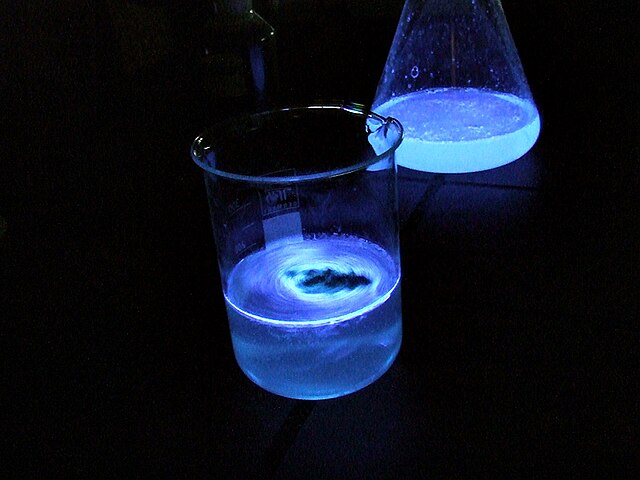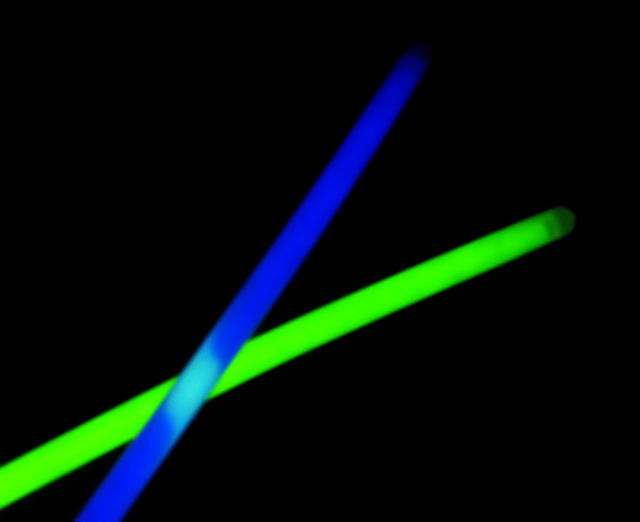Luminescence is the "spontaneous emission of radiation from an electronically or vibrationally excited species not in thermal equilibrium with its environment". A luminescent object is emitting "cold light", in contrast to "incandescence", where an object only emits light after heating. Generally, the emission of light is due to the movement of electrons between different energy levels within an atom after excitation by external factors. However, the exact mechanism of light emission in vibrationally excited species is unknown.
Luminol and haemoglobin, an example of chemiluminescence
UV-photoluminescence in microbiological diagnostics
Chemiluminescence is the emission of light (luminescence) as the result of a chemical reaction, i.e. a chemical reaction results in a flash or glow of light. A standard example of chemiluminescence in the laboratory setting is the luminol test. Here, blood is indicated by luminescence upon contact with iron in hemoglobin. When chemiluminescence takes place in living organisms, the phenomenon is called bioluminescence. A light stick emits light by chemiluminescence.
A chemoluminescent reaction in an Erlenmeyer flask
Chemiluminescence after a reaction of hydrogen peroxide and luminol
Green and blue glow sticks





